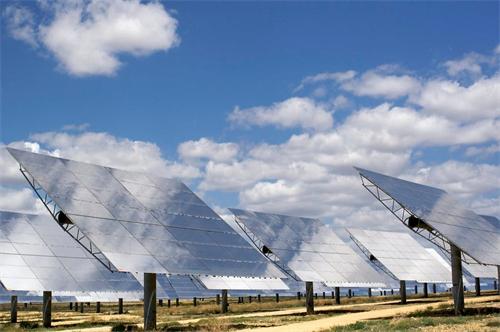Solar Boom 2.0: Silver Demand Soars as Solar Panel Output Doubles

As the global energy structure accelerates its shift toward low-carbon solutions, solar power is experiencing a new wave of rapid development. This "Solar Boom 2.0" is not only marked by technological breakthroughs and market expansion but has also triggered a sharp increase in silver demand—unleashing a new wave of global resource and supply chain competition.
Solar Power: From Eco-Friendly Option to Energy Mainstay
Solar energy has returned to the global spotlight not merely because it is "green." With the continued growth of the global population, the depletion of fossil fuels, and increasingly frequent extreme weather events, the need for stable, clean, and renewable energy has become a global consensus. Solar power meets all these critical criteria.
It emits no pollutants or greenhouse gases, produces no noise, and is extremely environmentally friendly. Furthermore, it has strong geographical adaptability—especially suitable for countries and regions with abundant sunlight. Most importantly, with technological advancements and economies of scale, the cost per unit of solar power has dropped below that of coal-fired power, making it one of the most cost-effective energy sources.
Solar energy is also a form of distributed energy. This means it can be deployed in remote or infrastructure-poor areas without relying on large-scale power grids, thus enhancing energy security and independence—especially vital for emerging markets.
Solar Panel Output Doubles: Technology Evolution Meets Global Demand Surge
In recent years, solar panel manufacturing technology has seen rapid leaps forward. Traditional P-type PERC cells, while nearing their theoretical efficiency limits, are being phased out. Replacing them are new-generation high-efficiency technologies such as TOPCon, HJT, perovskite, and back-contact (BC) cells. These advancements have significantly improved photoelectric conversion rates, reduced manufacturing costs, and extended product lifespans. Fast-paced innovation is driving industrial upgrades and fueling fierce competition among manufacturers.
This competition, coupled with technological maturity, is powering a rapid global expansion in production capacity. Starting in 2024, global solar panel output has effectively doubled. And this growth is not limited to traditional strongholds like the U.S., Europe, or China—it’s thriving even more vibrantly in emerging markets across Africa, Southeast Asia, and Latin America.
These regions often face limited grid coverage and unstable electricity supply, yet they enjoy far more sunlight annually than Western countries. Consequently, household photovoltaic systems combined with energy storage are becoming popular solutions to reduce electricity costs and increase energy independence—significantly boosting local demand for solar panels.
Silver Demand Surges: From Precious Metal to Energy Material
Amid this solar boom, silver's role has quietly transformed. Once viewed primarily as a precious metal, it is now increasingly regarded as an industrial material—specifically a critical, irreplaceable component in the solar industry. Silver paste, used in solar panels for conductivity, is essential for efficient energy generation. In current mainstream PERC technology, each panel requires about 15–20 grams of silver. Newer technologies like TOPCon and HJT require even more.
By 2023, the photovoltaic industry accounted for approximately 15%–20% of global industrial silver consumption. This proportion is expected to surpass 30% within the next three years, positioning solar power as the primary driver of global silver demand.
However, a mismatch between supply and demand is becoming a growing concern. While soaring demand should push silver prices higher, factors like high interest rates abroad, inflation uncertainty, and complex global supply chain restructuring have suppressed price increases. This has dampened mining investment enthusiasm and delayed new silver mining projects. As production costs rise but prices stagnate, the silver market finds itself in a dilemma of “high demand, low supply.”
Although the solar industry is actively exploring "silver reduction" technologies—such as copper electroplating or silver-coated copper alternatives—these solutions face challenges in reliability and scalability. In the short term, they are unlikely to replace pure silver on a large scale.
Silver Prices Set to Rise, but Watch Out for Producer Risks
Given the mounting supply-demand tension, the market widely anticipates a significant rise in silver prices over the next two years. Industry forecasts suggest silver could reach $35 per ounce by the end of 2025 and potentially $38 by the end of 2026. The main driving force remains the rapid expansion of the solar sector and the rigid demand for silver.
It’s worth noting that silver reserves are heavily concentrated in a few countries, primarily Mexico, Peru, and China. The political stability, economic policies, and environmental regulations in these countries have direct impacts on global silver output and pricing. Any political unrest or policy shifts could disrupt the global supply chain—posing risks that both investors and companies must proactively manage.
A Shared Future: Solar and Silver Bound Together
In the long term, solar power will play an irreplaceable role in the global energy transition. According to the IEA, to achieve carbon neutrality by 2030, the world must install 650 GW of solar capacity annually—double the current global capacity. This points to a future solar industry defined by high growth, high technology, and high resource demand.
Silver, as a core material in the solar value chain, is set to rise alongside it. No longer just a commodity for jewelry, investment, or reserves, silver is becoming a strategic resource in the green energy revolution.
Driven by Solar Boom 2.0, we are witnessing not only a transformation of the global energy landscape, but also a deep realignment of how the planet’s natural resources are used—from mines to rooftops, from technological innovation to geopolitical strategy. The future of energy may be powered by sunlight—but it will also reshape the global economy and the way we value Earth’s resources.



